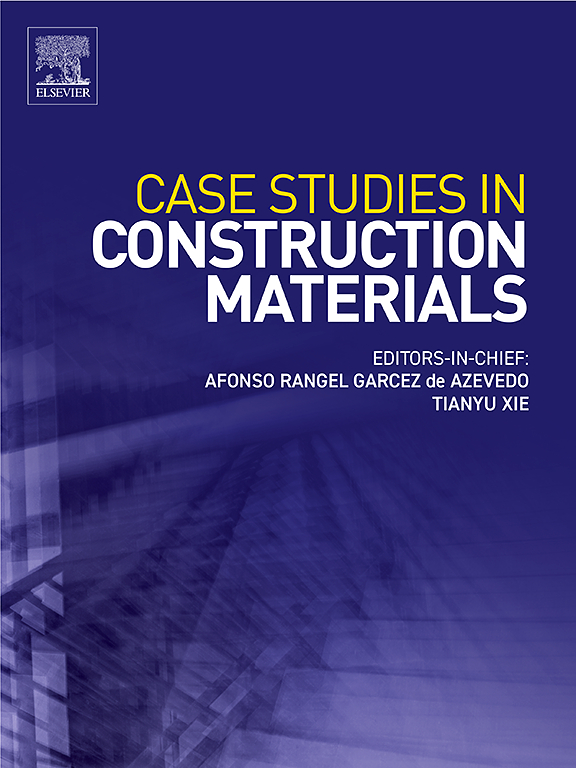Predictive modeling and degradation mechanisms of rubber sealing materials under stress-thermal oxidative aging for long-term sealing performance
IF 6.6
2区 工程技术
Q1 CONSTRUCTION & BUILDING TECHNOLOGY
引用次数: 0
Abstract
Rubber sealing materials are extensively utilized in engineering applications due to their superior sealing performance; however, their long-term durability poses a significant challenge. To address this issue, this study examines the aging behaviors of rubber materials, including stress relaxation and compression set, and incorporates these behaviors into a predictive model for impermeability performance. The rubber strain was analytically decomposed into elastic strain and viscoelastic strain, the latter representing permanent compression deformation. Based on this decomposition, a time-temperature conversion model was developed. Compression stress-thermal oxidative aging tests were conducted to validate the model, producing time and temperature-dependent expressions for permanent compression deformation and constitutive parameters of the rubber material. Additionally, degradation mechanisms were investigated using Fourier Transform Infrared Spectroscopy (FTIR) and Scanning Electron Microscopy (SEM), revealing significant molecular-level oxidation, polymer chain scission, crosslink degradation, and the emergence of microstructural defects such as cracks and interfacial debonding. The validated model was then employed in numerical simulations, implemented through a UMAT secondary development program, to investigate the degradation trends of impermeability performance under varying time and temperature conditions. The results elucidate the degradation mechanisms and trends of impermeability performance, offering critical insights into the long-term behavior of rubber sealing materials. These findings provide theoretical guidance for optimizing the design and performance evaluation of rubber gaskets in practical engineering applications, thereby enhancing their durability and reliability in demanding operational environments.
橡胶密封材料应力-热氧化老化对长期密封性能影响的预测建模及降解机理
橡胶密封材料因其优越的密封性能在工程中得到了广泛的应用;然而,它们的长期耐用性带来了重大挑战。为了解决这一问题,本研究考察了橡胶材料的老化行为,包括应力松弛和压缩集,并将这些行为纳入抗渗性能的预测模型。将橡胶应变解析分解为弹性应变和粘弹性应变,粘弹性应变代表永久压缩变形。在此基础上,建立了时间-温度转换模型。通过压缩应力-热氧化老化试验对模型进行了验证,得到了橡胶材料的永久压缩变形和本构参数随时间和温度变化的表达式。此外,利用傅里叶变换红外光谱(FTIR)和扫描电镜(SEM)研究了降解机制,揭示了显著的分子水平氧化、聚合物链断裂、交联降解以及裂纹和界面脱粘等微观结构缺陷的出现。通过UMAT二次开发程序,将验证的模型应用于数值模拟,研究了不同时间和温度条件下抗渗性能的退化趋势。研究结果阐明了抗渗性能的退化机制和趋势,为橡胶密封材料的长期性能提供了重要的见解。这些研究结果为实际工程应用中橡胶垫片的优化设计和性能评估提供了理论指导,从而提高了橡胶垫片在苛刻操作环境中的耐久性和可靠性。
本文章由计算机程序翻译,如有差异,请以英文原文为准。
求助全文
约1分钟内获得全文
求助全文
来源期刊

Case Studies in Construction Materials
Multiple-
CiteScore
7.60
自引率
19.40%
发文量
842
审稿时长
63 days
期刊介绍:
Case Studies in Construction Materials provides a forum for the rapid publication of short, structured Case Studies on construction materials. In addition, the journal also publishes related Short Communications, Full length research article and Comprehensive review papers (by invitation).
The journal will provide an essential compendium of case studies for practicing engineers, designers, researchers and other practitioners who are interested in all aspects construction materials. The journal will publish new and novel case studies, but will also provide a forum for the publication of high quality descriptions of classic construction material problems and solutions.
 求助内容:
求助内容: 应助结果提醒方式:
应助结果提醒方式:


